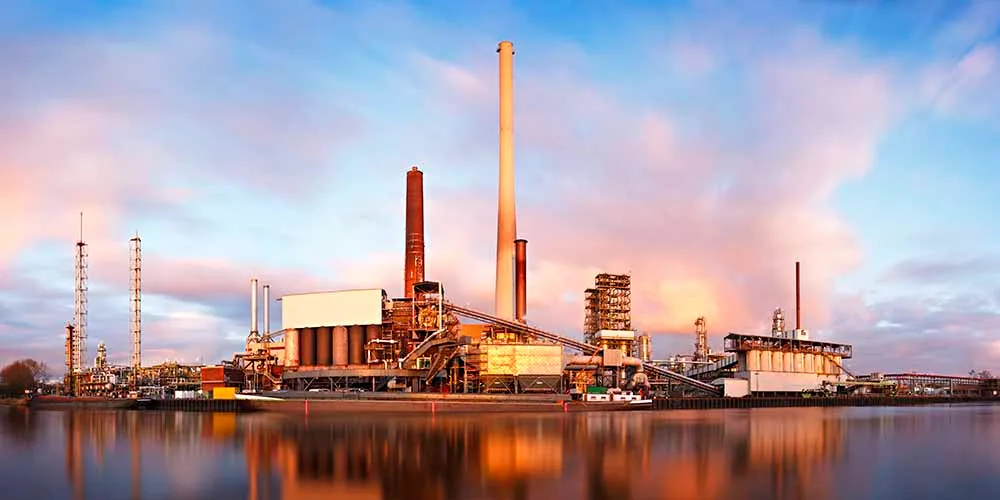Process safety - risk and reliability
The process industries too often experience losses with accidents, equipment failure and operational downtime. This results in higher costs and also in potential harm to people, property and the environment. For over 30 years DNV has been developing the world-leading tools for hazard, risk and performance analysis in the process industries, helping companies minimize losses and manage safety and asset performance.
Simulation of loss of containment accidents allows engineers to see and understand undesirable outcomes so that they can avoid, prevent and as a last resort protect against them. By understanding the hazards and the risks they present, equipment, plants and sites can be designed and operated safely.
Failure of equipment and maintenance have an influence on performance and therefore on the commercial success of process industry activities such as oil and gas production and refining. Reliability, availability, maintainability (RAM) analysis helps the industry predict the performance of processes and business operations. Complex enterprises including oil and gas fields, processing and logistics can be efficiently simulated, comparing design and operation options in order to optimize performance and analyse cost-benefit over the entire lifecycle.
Process hazard analysis
Materials such as oil and gas can present a significant hazard due in part to their high energy content. Pharmaceuticals and petrochemicals may be flammable, explosive and toxic. To add to the risk, hazardous pressures and temperatures are often necessary in order to process these materials to create usable products.
For these reasons the process industry is a source of major hazards to people, property and the environment. The global community of process safety professionals continuously strives to manage these hazards. DNV’s hazard analysis tools contain world-leading, experimentally validated models for simulation of the behaviour of loss of containment of hazardous materials. By analysing and visualizing potential discharge, dispersion, fires, explosions and toxic effects, steps can be taken to minimize and manage these hazards at design time and in operation of major hazard facilities.
With over 30 years of development, and continuous research and innovation, DNV’s hazard analysis tools have been adopted by thousands of users around the world throughout the process industries. We know the importance of managing hazards, and our expertise and principles are embedded in our hazard analysis tools, with world-leading modelling and experimental capabilities.
Risk analysis for the process industry
Although a zero risk process facility is not an option, we are seeing steadily lower tolerance for incidents and failure to manage risk. With inherently safer best-practice design principles in place, residual risk is minimized. Still, a level of risk remains and must be managed. By calculating the likelihood and consequence of undesirable events, the process industry can establish risk profiles of their facilities and focus efforts on strengthening the barriers in place to manage those risks. By simulating accidental events and analysing their impact, the process industry can understand and visualize the source of the risk and its effects on people, property and the environment.
Traditionally, the purpose of conducting a risk analysis has been to comply with regulatory requirements. This paradigm has evolved into risk-based design and risk-based operations. Quantification of risk forms a valuable basis on which to help determine where to focus avoidance, prevention and mitigation measures, given finite resources. DNV’s risk analysis tools have been adopted globally in the oil and gas, petrochemicals, chemicals, pharmaceutical, insurance, steel and other industries for the purpose of understanding and therefore managing risk.
RAM studies - Reliability, Availability and Maintainability
The assured performance of oil and gas assets is key to obtaining a return on the significant investment required for exploration, production and processing. Both maintenance strategies and production losses caused by downtime due to equipment failures need to be understood at design time and onward, throughout the entire lifecycle of the asset.
Reliability, Availability, Maintainability (RAM) analysis allows you to simulate the entire lifetime performance of an asset in terms of availability, production efficiency and profitability. By using this well-established analytical method, you are able to predict problems before they occur. RAM analysis is performed in design and operation, from upstream oil and gas extraction through processing and transport logistics to the delivery of refined products to the customer. Armed with a complete analysis of a system’s performance, you can vary system configurations, maintenance strategies and operational initiatives to determine the optimum approach for your enterprise.
DNV has over 30 years of experience in developing the world-leading RAM analysis tools for the oil and gas and petrochemical industries. With a global user base of major operators and engineering companies, we meet the unique demands of the oil and gas industry, where users analyse and predict performance with assured results on a daily basis around the world.
Offshore QRA
Offshore oil and gas reserves continue to be explored and produced. New installations, extension of life for old installations and novel approaches such as Floating Liquefied Natural Gas Facilities (FLNG) continue to be developed to meet the world’s growing energy demands. The nature of hydrocarbon extraction facilities are such that complex operations, chemical processes and logistics take place in remote locations on densely populated and spatially restricted assets. Handling large quantities of high energy products at high pressures can unfortunately lead to risk to life on a large scale on the installation and risk to the environment on a potentially catastrophic scale when things go wrong, not to mention the broader economic impact.
CFD simulation
Our experts have been working closely with partners in the oil and gas industry for over 30 years to develop and apply scientifically based methods to solve industrial problems. We have also been engaged by governmental bodies for the investigation of fire accidents. We rely on the most advanced CFD code for gas dispersion, flare and simulation, which has become an industry standard.
